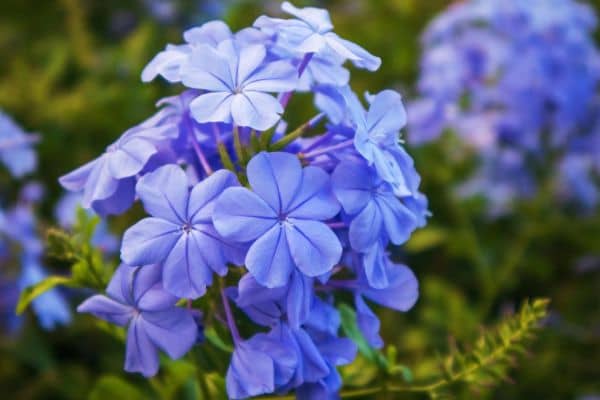Blue Plumbago is one of the beautiful evergreen plants which has beautiful blue flowers and you have made up your mind to grow it in your garden. Now here you will know how to grow and care for your blue plumbago plant.
How to Grow a Blue Plumbago Plant
So you have made up your mind to grow blue plumbago but don’t know where to start just know it is one of the evergreen plants. All you have to do is keep the seedlings moist for about a year until they get well-established. After they have been well-established they can even survive in most of the season but don’t forget to water them one inch per week or they won’t grow properly.
Blue Plumbago plants also need a lot of space to grow so remember to leave plenty of room for them in your garden. They do best in full sun and even can tolerate some shade if you are willing to sacrifice some of the bloom. Remember that they need fertile, well-drained soil, Slightly acidic, slightly alkaline, clay, sand, or loam for them to grow properly with beautiful flowers.
Don’t forget to do occasional pruning so they will become leggy but if you do too much or too ofter they will not bloom properly.
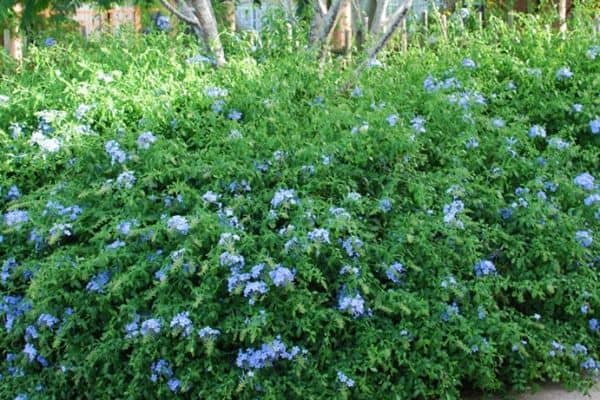
How to Care for a Blue Plumbago Plant
So you have grown an evergreen shrub of blue plumbago but maintaining and caring for them is also important. If not your blue plumbago plant won’t grow properly and won’t bloom properly. So here are some of the tips and tricks you can use to care for the better growth of your blue plumbago plant:
Light
Blue Plumbagos goes well in full sun with six or more hours of daily exposure and can easily adapt to part-shaded places. Even though they can survive with six or more hours of sun a minimum of two hours of direct sunlight is required. If you have planted blue plumbagos at your home in a pot then you have to keep them in a brightly lit room.
Soil
Blue Plumbagos does well in any type of soil if the soil is organically rich and well-draining. They do well in neutral pH either slightly acidic to slightly alkaline but having too much alkalinity will degrade its foliage.
Water
If your blue plumbagos are well established and can go through drought tolerant easily. However for vibrant flowers, the longest continuous bloom, and peak performance you will have to water them one inch per week.
Temperature and Humidity
Blue Plumbagos mostly require 60°F for their vigorous growing environment while they are mostly evergreen at a temperature of 25°F and root hardy to 10°F. As of humidity blue plumbagos don’t require much of them.
Fertilizer
If your soil has low quality then you can add fertilizer for blue plumbagos. You can use fertilizer twice annually, in the spring and autumn. Just remember that the fertilizer most be balanced NPK 10-10-10 and slow-release fertilizer for better growth and bloom.
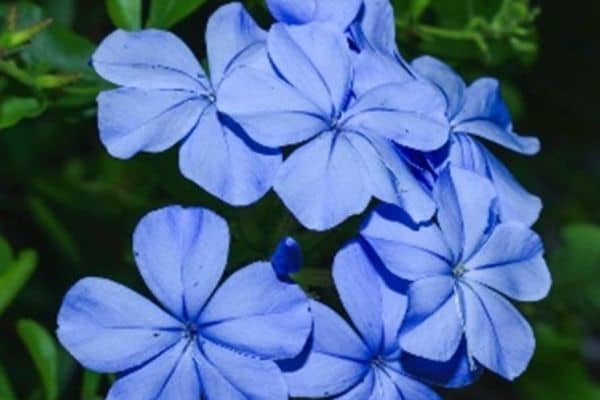
Types of Blue Plumbago
There are mainly three types of blue plumbago that are famous among gardeners and they are as follows:
- Plumbago auriculata ‘Monott’: Plumbago auriculata ‘Monott’ has the deepest blue flower color among other varieties of blue plumbago and they are also known for evergreen plants. They bloom in large clusters of vivid blue and white phlox-like flowers all year round.
- Plumbago auriculata ‘Imperial Blue’: Plumbago auriculata ‘Imperial Blue’ has a cluster of blue flowers on arching branches only during summer months. They are not evergreen plants as they can be categorized as semi-evergreen plants.
- Plumbago auriculata f. ‘Alba’: Plumbago auriculata f. ‘Alba’ has clusters of creamy white five-petaled flowers with spoon-shaped and light green leaves. They are also known for being an evergreen plant that blooms flower from spring through summer or year-round in frost-free zones.
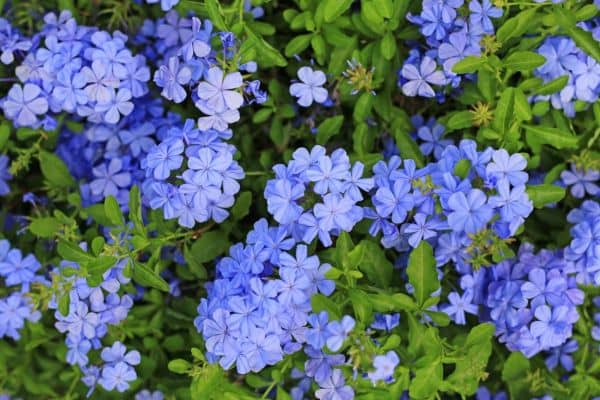
Landscaping Blue Plumbago
Blue Plumbago can also be used perfectly for landscaping your front or back yards. They can be used to decorate near foundation plantings or can be also used as a groundcover or trained on a trellis or similar structure.
They also go well in containers and walls and look gorgeous spilling over the edges or cascading down.
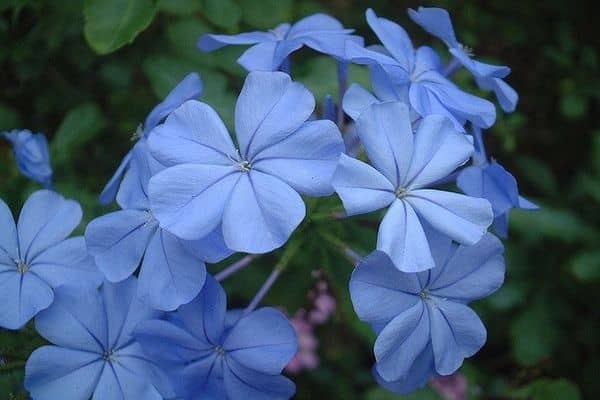
Common Pests and Plant Diseases for Blue Plumbago
For pests and plant diseases, you will not have to worry about a thing as they are relatively free of both pests and plant diseases. Scale and mites may invade the blue plumbago plants but they won’t affect them in both growth and blooming.
FAQs
Q. Is Blue Plumbago an Indoor Plant?
Yes, blue plumbago can be grown as an indoor plant as it needs protection from frost and cold winds.
Q. Is Blue Plumbago Poisonous?
No, blue plumbago is not considered poisonous but still keep it safe from children due to potential skin irritation.
Q. How Tall does Blue Plumbago Get?
Blue Plumbago can get up to six to ten feet tall with eight to ten feet width.
Also Read: 7 Simple Strategies for Attracting Beneficial Bugs to Your Yard – And The Reason Why You Should
